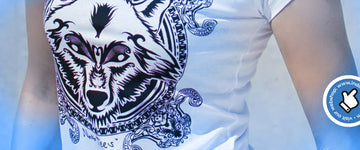In DTF (Direct-to-Film) printing technology, curing is a crucial step that helps to ensure the longevity and durability of the printed image. Curing refers to the process of applying heat to the ink to activate the curing agent, allowing it to fully bond to the surface of the film and become more resistant to fading, cracking, and other forms of wear and tear.
Apply heat to the printed image
The curing process in DTF printing involves using a heat press or oven to apply heat to the printed image for a specific amount of time. The heat causes the curing agent in the ink to react and cross-link, creating a more stable and durable bond with the film. The exact curing time and temperature will depend on the specific type of ink and film being used, as well as the printer and heat press or oven being used for curing.
Follow manufacturer's instructions
Improper curing can result in a weaker bond between the ink and film, leading to fading, cracking, and other forms of wear and tear over time. Over-curing can also cause the ink to become brittle and more prone to cracking, so it's important to avoid excessive heat or pressure during the curing process. It's important to follow the manufacturer's instructions for curing the ink to ensure optimal results.
Storing out of direct sunlight / heat / moisture
In addition to ensuring proper curing, it's also important to properly store and handle the printed film after curing to maintain its quality and longevity. Keep the film out of direct sunlight and away from sources of heat and moisture, and handle it carefully to avoid scratching or damaging the printed image.
Take-away
Overall, curing is a critical step in the DTF printing process that helps to ensure the quality and durability of the printed image. By following the manufacturer's instructions for curing, handling, and storing the printed film, you can create high-quality prints that meet your needs and stand the test of time.
Any questions? Please feel free to reach out to our specialists via the contact form.







